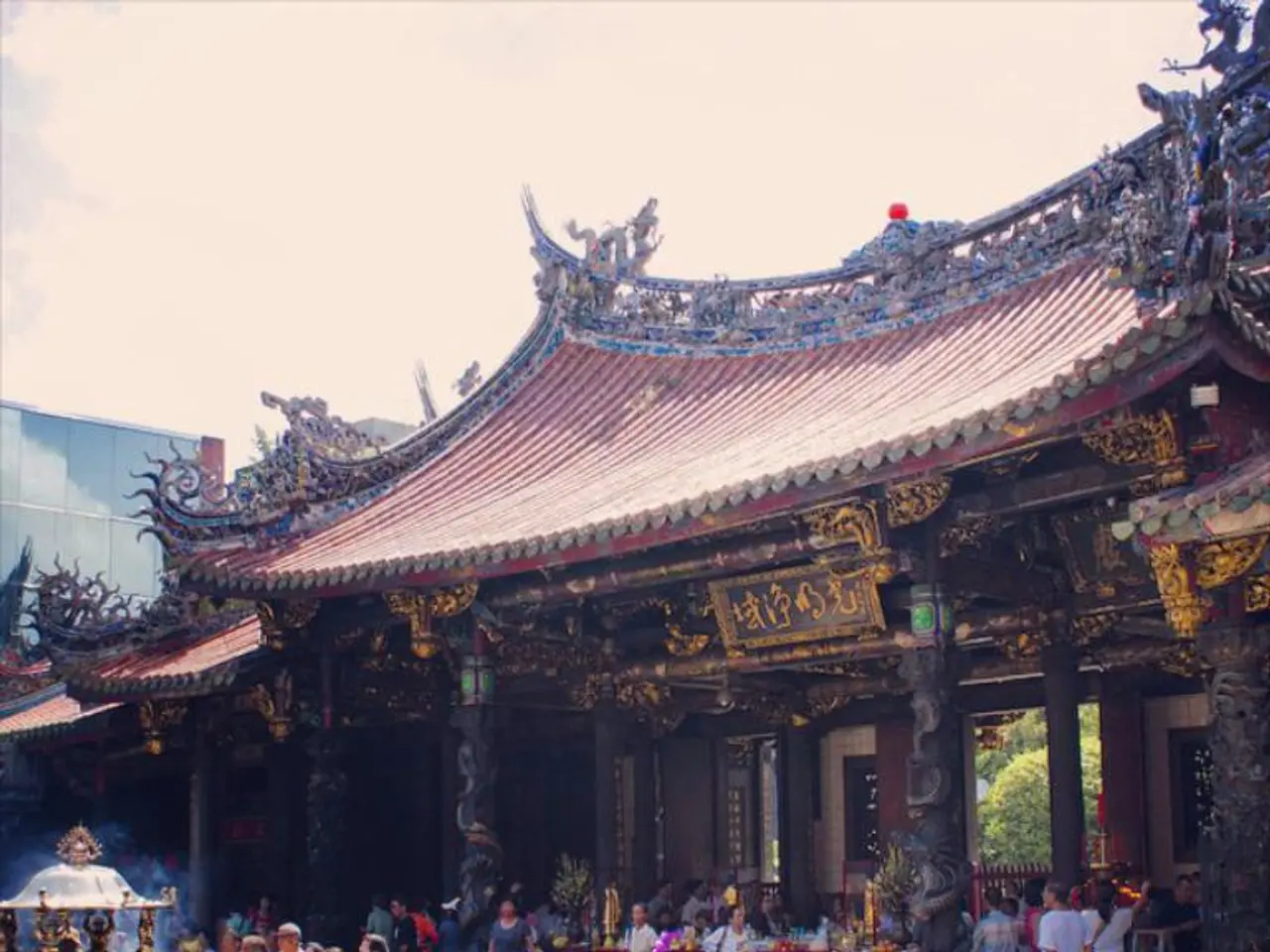Huawei Introduces AI Processor to Compete with Nvidia's, Aiming for Leadership in Global AI Superiority
Ready for the New Silicon Contender? Huawei's AI Chip Takes on Nvidia
Huawei, one of China's leading telecom and tech pioneers, is shaking up the global tech world with the launch of its powerful new AI chip, aiming to challenge Nvidia's market-dominating GPU offerings. This move is a strategic response to the escalating technological rivalry between the USA and China, and Beijing's broader ambition to achieve semiconductor and AI self-sufficiency in the face of mounting trade restrictions.
Huawei's AI Chip: Aggressive Push for Tech Independence
The chip, part of Huawei's Ascend AI chipset family, boasts high performance in model training and inference, key elements in artificial intelligence operations. It's designed to take on Nvidia's H100 and A100 GPUs, renowned for their role in training advanced models like GPT, DALL·E, and Gemini.
This new processor represents Huawei's major stride towards reducing China's dependence on U.S.-controlled semiconductor technology. Here's a lowdown on what makes this chip stand out:
- 7nm fabrication (courtesy of local partner, SMIC)
- High-performance tensor processing units (TPUs) optimized for large-scale matrix operations
- Compatibility with Huawei's MindSpore AI framework
- Focus on both training and inference workloads
- AI energy-efficiency optimization tools
Process Node
The chip targets sectors like large-scale enterprise AI applications, smart infrastructure projects, autonomous driving technologies, and AI-enhanced telecommunications.
7nm (SMIC)
In the Shadow of U.S.-China Tensions
7nm (TSMC)
The chip's announcement comes as U.S.-China tensions intensify over technology exports, particularly in the semiconductor sector. The Biden administration has imposed stringent export controls on advanced AI chips from companies like Nvidia and AMD, effectively preventing sales to Chinese firms.
In response, China has intensified its goals to achieve "chip independence", pumping billions into domestic semiconductor R&D and manufacturing capabilities. Huawei faces a dual challenge: overcoming technical barriers imposed by sanctions and competing with Nvidia, the uncontested leader in AI silicon.
AI Throughput
Breaking Down the Technical Specs
~240 TFLOPs FP16
While independent performance benchmarking is still awaited, Huawei claims the new chip offers 70-80% of the performance of Nvidia's A100 GPU at a lower power draw and with native support for China-based cloud infrastructures.
312 TFLOPs FP16
The chip integrates tightly with Huawei's Ascend C and Atlas server families and is expected to become the standard in many government AI projects.
On the Horizon: MindSpore, Huawei's AI Framework
Memory Bandwidth
Complementing the chip is MindSpore, Huawei's answer to TensorFlow and PyTorch. The new AI chip is designed to fully leverage MindSpore's architecture, offering seamless model development, training, and deployment. MindSpore provides optimized graph execution, native Chinese language processing capabilities, model compression and quantization support, and enterprise-focused API toolkits.
~1.6TB/s
The Clash of the Titans: Huawei vs. Nvidia
1.6TB/s
| Feature | Huawei New AI Chip | Nvidia A100 || --- | --- | --- || Process Node | 7nm (SMIC) | 7nm (TSMC) || AI Throughput | ~240 TFLOPs FP16 | 312 TFLOPs FP16 || Memory Bandwidth | ~1.6TB/s | 1.6-2.0 TB/s || Software Ecosystem | MindSpore | CUDA, PyTorch, TensorFlow || Market Focus | China-first, enterprise & gov | Global, all sectors || Export Restrictions | Not subject to U.S. control | U.S. export restrictions apply |
Strategic Implications and Market Dynamics
Software Ecosystem
This development underscores China's determination to insulate its technological ambitions from U.S. influence. With access to Nvidia's high-end GPUs limited, the new chip becomes a national strategic asset that could support China's plans for AI-powered surveillance systems, military simulation, next-gen industrial automation, and more.
MindSpore
The chip's release aligns with the Chinese government's 2025 technology roadmap, which includes a target to produce 70% of its semiconductors domestically by 2025.
CUDA, PyTorch, TensorFlow
On the Ground: Industry Reception and Challenges
Initial reactions within the Chinese tech ecosystem have been enthusiastic, particularly among firms building models tailored for Mandarin language NLP, local fintech applications, and domestic healthcare AI platforms. However, Huawei still faces key hurdles:
Market Focus
- Scaling production capacity without access to ASML's EUV lithography machines
- Global trust and market access outside of China
- Lack of global developer adoption compared to CUDA ecosystem
China-first, enterprise & gov
Next in Line for Huawei: Expansion and Partnerships
Global, all sectors
Huawei plans to:
- Release a scaled-down version of the chip for edge AI deployments
- Launch cloud services powered entirely by Huawei AI chips
- Explore international partnerships in non-restricted markets like Africa, the Middle East, and Southeast Asia
Export Restrictions
Their strategy hinges on domestic adoption first, followed by expansion into non-Western markets.
Not subject to U.S. control
Final Thoughts: The New Era of AI Hardware
U.S. export restrictions apply
The Huawei New AI Chip is a testament to China's resilience and determination to lead in the next wave of artificial intelligence innovation. While the chip may not yet dethrone Nvidia globally, it provides a critical foundation for China's AI ambitions and highlights a future where AI hardware is no longer monopolized by Western tech giants.
As Huawei continues to innovate under pressure, the global AI chip landscape is gearing up for a new, multipolar era, set to redefine not just how AI is built, but who controls its destiny.
Read More:
- Artificial Muscle Technology with Robotic Arm
- AutoScience Carl: How AI is Revolutionizing Academic Research
- Nokia MX Context with AI-Powered Contextual Awareness
- Is AI Out of Control? The AI Control Problem
Huawei's AI Chip: A Pivotal Step in China's Financial and Technological IndependenceIn the realm of finance, Huawei's new AI chip represents a significant step towards reducing China's dependence on U.S.-controlled semiconductor technology, which could potentially lead to Financial improvements and economic self-sufficiency.
The Technology Industry: A Battlefield for AI DominanceThis chip is part of the broader technological rivalry between USA and China, with Huawei aiming to challenge Nvidia, a leading player in the artificial intelligence industry, particularly in the areas of finance, smart infrastructure, autonomous driving technologies, and AI-enhanced telecommunications.








